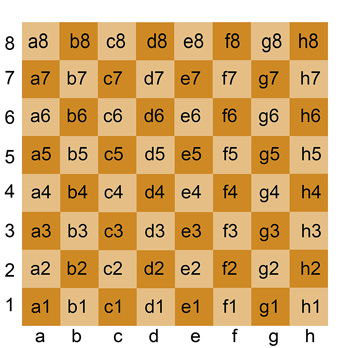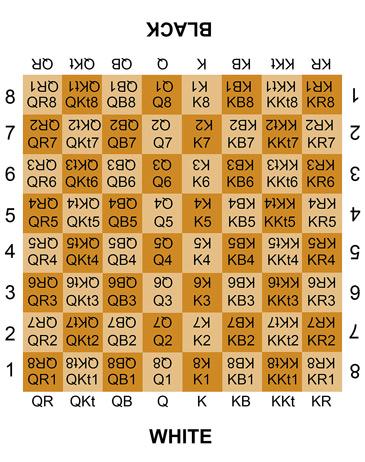|
Since we shall have to speak of the 64 squares of the board, we shall have to use some form of notation which will briefly but clearly indicate what we mean, and the individual square under discussion. The need for such a notation has been felt ever since the first book was written on chess, but as yet authorities are not agreed as to which one is the better one. There are two systems in vogue, one is scientific and abstract, the other descriptive and concrete. Both will work when explaining chess iphone strategies, on this or other peripherals. The scientific notation is based on “coordinates.” Looking at the board from Whites side, the eight files (spaces) of the board from left to right are designated by the eight letters a, b, c, d, e, f, g, h, and the eight ranks (spaces) on the board from the lower to the upper side are represented by the 8 numbers 1, 2, 3, 4, 5, 6, 7, 8. A square is named by the use of both its file letter and rank number, for instance, e1 is the square where the White King stands in the initial position, d8 is where the Black Queen stands in the initial position. This notation is in use in many countries, but is of rather recent origin and is more than suitable to explain chess iphone strategies, etc. Earlier in the history of the game another notation was generally in use, and some countries have stuck with it, mainly the English speaking countries and the Latin countries. In this form the eight files (spaces) from left to right are called the Queens Rooks file, or QR file; the Queens Knights file, or QKt file; the Queens Bishop file, or QB file; the Queens or Q file; the Kings or K file; the Kings Bishop, or KB file; the Kings Knight, or KKt file; the Kings Rook, or KR file.
The square on which a piece in the initial position stands is called by the name of the piece, for example, Kings square, abbreviated K or K1, etc. And the squared in front of each piece is indicated by their file and their distance from the base. Thus K4 is the square on the Kings file fourth from the base or K square, which must be included in the counting. Moreover, in this form of notation, the squares have a double designation according to the point of view of the player. Black, in recording his move…
WHITE
Calculates from his own point of view, notes the files in the same way as White, but the squares by their distance from his own base line.
If you view this e-book page upside down you will see the board from the Blacks point of view. The chessboard in the descriptive notation from Blacks point of view is the same as Whites except Black has its own notation. The square K1 from Whites point of view is K8 from Blacks point of view. If White begins the game by moving the pawn from e2 to e4 and Black replies e7 to e5, the moves are written algebraically; 1...e2-e4...e7-e5 and in the descriptive notation; 1...P-K4...P-K4 A double threat to capture the King is called “Double Check.” Checkmate is written ++. A mark of exclamation ! shown after a move shows an excellent move, or the best move. A question mark ? shown after a move means that the move is fair or bad or a mistake. Two question marks ?? shown after a move reaffirms a bad move.
|


